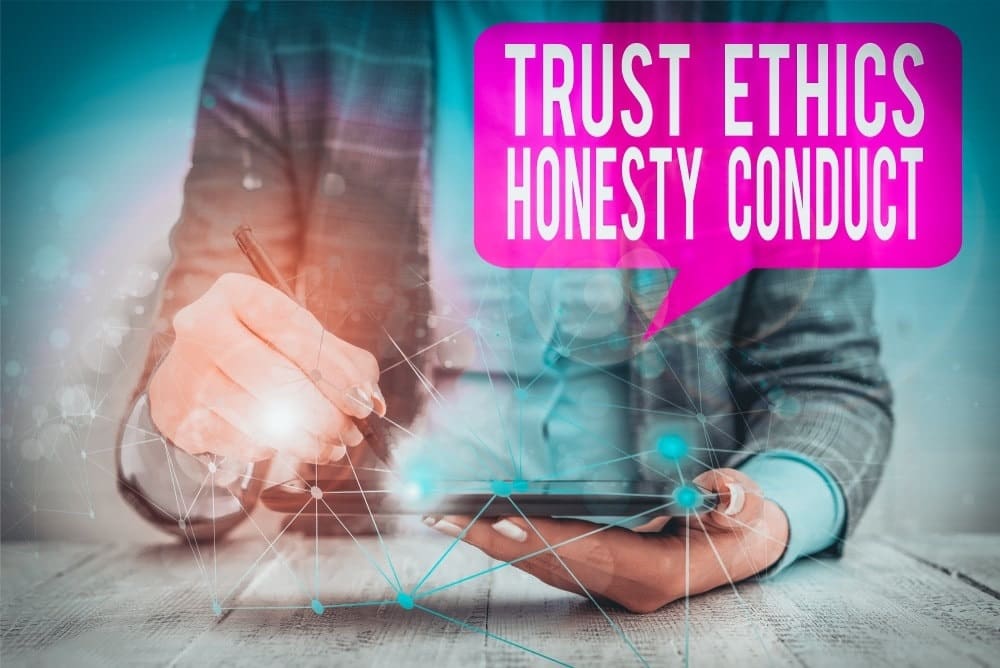Once upon a time, a corporate compliance program might have been a “nice to have” element. Those days are gone. Marc Tasse concludes a two-part series on reputational risks with a framework for building a robust E&C program.
Read Part 1 here.
A Corporate Compliance Program is an Absolute “Must Have”
Over the last few years, we have observed a strong increase of international collaboration in enforcement by various authorities. Not only does this help bring international corruption cases to conclusion more quickly, but it also gives a clear message to potential perpetrators: the chances of getting caught are increasing.
With all the public discussion around corruption scandals and the massive impact sanctions such as debarment, monitorship and huge monetary penalties have, executives that continue to ignore corruption are not only running the risk of exposing their organization’s failure to implement effective anti-corruption compliance programs, but are also acting with gross negligence and gambling with the future of their company and its employees.
The dramatic reputational and financial impact of noncompliance and unethical management practices as presented in the press and social media in connection with SNC-Lavalin, Bombardier, Volkswagen, Valeant, Petrobras and others have contributed to (1) the investment community taking increased interest in long-term sustainability of companies within their portfolios and (2) how ethics and compliance are embedded in a company’s corporate culture. Institutional investors are increasingly demanding evidence of effective compliance programs before making significant investments in portfolio corporations.
There clearly is a new recognition that establishing a corporate compliance program is no longer “nice to have,” but rather an absolute “must have” for all corporations.
As more and more stakeholders are demanding robust compliance programs, those companies that embrace ethics and compliance will emerge with a competitive advantage.
The C-suite executives need to provide the appropriate tone from the top and ensure that ethical behavior will be considered as part of the performance evaluation process of middle and senior managers. Equally there should be zero tolerance for violations, even if it may affect top executives and other “high achievers.”
A key element of the foundation for a successful compliance program will always have to be a thorough compliance risk assessment, taking into consideration the company’s geographical footprint, industry sector, government interactions, past identified fraudulent activities and other policy violations, third-party relationships and overall business models, to name just a few of the input factors that should be considered for an in-depth compliance risk assessment.
Only if compliance risks are clearly identified will the Chief Compliance Officer or equivalent be able to design effective risk mitigation measures, helping to prevent corrupt activities. Such a risk assessment should be repeated regularly in order to account for changes in the respective market environment, as well as other changes to related risk parameters.
Prevention of corrupt activities largely depends on targeted risk mitigation measures and starts with ensuring sufficient awareness across all company stakeholders. The more people know about the factors that contribute to corruption, the harder will it be for corrupt individuals to continue their unethical practices.
Training Executives on Anti-Corruption Laws: Best Practices
Good strategists manage uncertainty by playing the probabilities, but too many executives use wishful thinking when it comes to anti-corruption compliance. Playing the probabilities means understanding the odds of success. Just 1 in 12 companies manages to mitigate reputational risk exposure resulting from noncompliance, which in turn results in a high level of reputational risk exposure.
Noncompliance seriously increases risk and liability, depreciates M&A and joint venture value, potentially damages the brand, undermines and reduces trust and confidence, increases the potential for investigation and prosecution and threatens sustainability. Executives must be proactive and continuously diligent in their efforts to mitigate individual and organizational risks.
Corporate boards are due for a rude awakening: Compliance expectations and competing stakeholders are demanding increased and more effective oversight. Directors, therefore, need to learn how to carry out these important functions.
When training executives on anti-corruption laws, we need to make them realize that boards and senior executives need to do substantially more than a once-a-year “flyover” of their anti-corruption compliance programs if they expect the regulators to conclude that their program meets the government’s definition of “effective.”
Boards need to be well-versed in all elements of the anti-corruption compliance program, regularly interact with compliance and legal personnel and receive timely briefings on the program and the personnel responsible for its stewardship and operationalization. Directors and senior executives must understand that any compliance failures are something that they may have to answer to.
The existence of adequate policies and procedures does not provide a full defense against bribery charges, but it can be a useful tool for negotiating with authorities or avoiding proceedings against corporate entities. Further, because liability can also be founded on “willful blindness,” the existence of anti-corruption policies and procedures can be helpful in rebutting any inference that a company or its executives ignored bribery. Bad acts can happen even if a company has attempted to prevent corruption, but its goodwill will be advantageous in curbing undeserved penalties.
There is still a place for tone at the top, but it needs to be broadened to conduct at the top.
The board and senior leadership must set the right tone in their communications across the company and outwardly, but tone needs to be paired with persistent actions on the part of the board and senior leadership, signaling that ethics and compliance are a top priority and that the company is committed to doing business the right way and is prepared to back up its words with actions, including walking away from business and relationships that are not in alignment with the company’s organizational ethos. That is how tone at the top becomes conduct at the top.
When training boards and senior executives on anti-corruption laws, we also need to make them realize that while they cannot control the integrity of individuals, they can certainly influence it. An organization’s culture influences the integrity of those employees that are either on the fence or would rationalize wrongdoing when the culture promotes willful blindness, permits ignorance of policies and controls or encourages the avoidance of those controls through unreasonable business goals and rewarding success by any means.
Finally, boards and senior executives need to be aware that no controls, compliance program or business culture can eliminate or totally prevent people without integrity from doing wrong, but the absence of those factors greatly increases the capacity of wrongdoers to operate with impunity; and the strong presence of those factors greatly increases the likelihood of preventing and detecting wrongdoing, as well as providing a foundation to mitigate its impacts and consequences on the organization.
How to Establish a Robust Ethics & Compliance Program
Global Compact Network Canada has published “Designing an Anti-Corruption Compliance Program – A Guide for Canadian Businesses,” which suggests that in order to have an effective compliance program, some very important questions need to be addressed and documented:
- Does the CEO have the requisite skills and experience to move the organization forward?
- Does the CEO possess the character and moral fiber to model and contribute to the development of a values-centered enterprise and strategy?
- Does the CEO have the chemistry and communication skills necessary to rally others to successfully and consistently deliver on the organization’s value proposition to all stakeholders?
- Does the organization support the ethical culture and anti-corruption compliance program through training and communication, which includes allowing employees to raise ethics and corruption compliance issues without fear of retaliation?
- What is the process for assessing ethics and corruption compliance risks within the organization?
- Have they updated their policies, procedures and internal controls to address emerging risks (e.g., cyber risk, anti-corruption)?
- Does the current ethics and anti-corruption compliance program cover the organization’s global operations, including management, employees, shareholders, customers, subcontractors, business partners and vendors?
- Does the organization have an ethics and compliance officer?
- Does a reporting and monitoring process keep the board of directors informed of key ethics and corruption compliance issues, as well as the actions taken to address them?
- Are ethics and corruption compliance issue a regular item on the board agenda?
Conclusion
Here are some practical suggestions that may be useful to board members and senior executives:
- Sustained leadership on transparency and integrity is vital.
- Strong anti-corruption measures and repeated staff training is crucial.
- The compliance office must be answering directly to the CEO and report to the board.
- When allegations occur, move quickly with a forensic audit and investigation (an external investigator is preferred), and if criminal issues are uncovered, turn them over to the appropriate authorities.
- Ensure that the staff remuneration is not an incentive to sell contracts at all costs.
- Make it clear in documentation that this is a “clean” company that does not bribe. This has been demonstrated to be a deterrent to bribe-asking.
- Include in the external audit a review of the compliance on anti-corruption measures.
- Ensure full transparency in contract management.
- Publish who the real beneficial owners of their company and subsidiaries are.
- Beware of transfer pricing and tax evasion, since it creates impoverishment in countries where the company is working; especially in the natural resources sector and in poorer countries.



 Marc Tasse is an investigative and forensic accountant and an internationally renowned subject matter expert in the fields of anti-bribery / anti-corruption, anti-money laundering and anti-fraud. Marc examines financial crime from different angles and explores what motivates people to break the law, how wrongdoers cover their tracks and what can be done to put a stop to the looting.
An award-winning lecturer in the MBA program at the Telfer School of Management and in the Common Law Section at the University of Ottawa’s Faculty of Law, his current research focuses on the actual and potential effects of allegations of corruption and improper financial reporting on publicly traded companies’ market capitalization.
Marc is a Chartered Professional Accountant – Chartered Accountant (CPA, CA) (Canada), a Forensic Certified Public Accountant (FCPA) (USA) and a Certified Internal Controls Auditor (CICA) (USA). He carries the designation of Certified in Financial Forensics (CFF) (USA), and holds both an Honours Bachelor of Commerce and a Master’s degree in Business Administration (MBA) from the Telfer School of Management at the University of Ottawa.
Marc Tasse is an investigative and forensic accountant and an internationally renowned subject matter expert in the fields of anti-bribery / anti-corruption, anti-money laundering and anti-fraud. Marc examines financial crime from different angles and explores what motivates people to break the law, how wrongdoers cover their tracks and what can be done to put a stop to the looting.
An award-winning lecturer in the MBA program at the Telfer School of Management and in the Common Law Section at the University of Ottawa’s Faculty of Law, his current research focuses on the actual and potential effects of allegations of corruption and improper financial reporting on publicly traded companies’ market capitalization.
Marc is a Chartered Professional Accountant – Chartered Accountant (CPA, CA) (Canada), a Forensic Certified Public Accountant (FCPA) (USA) and a Certified Internal Controls Auditor (CICA) (USA). He carries the designation of Certified in Financial Forensics (CFF) (USA), and holds both an Honours Bachelor of Commerce and a Master’s degree in Business Administration (MBA) from the Telfer School of Management at the University of Ottawa.







